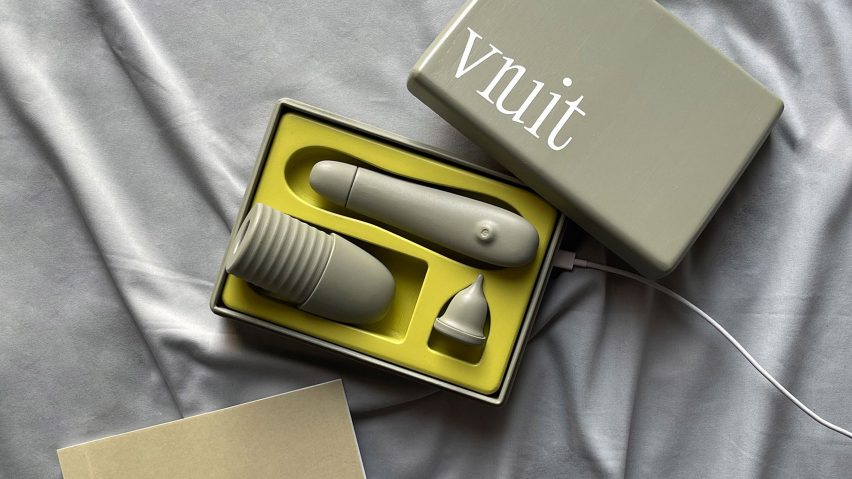
Vruit vibrator doubles as artificial insemination device
Design graduate Juliane Kühr has presented a set of sex toys for self-insemination at Dutch Design Week, which were devised to be used during sex to help pleasure take its rightful place in the assisted conception process.
The Vruit kit comes with a Fleshlight-style masturbator for sperm donation, plus a choice of two insemination devices – a vibrator or a small silicone cervical cup for those who prefer to forego penetration.
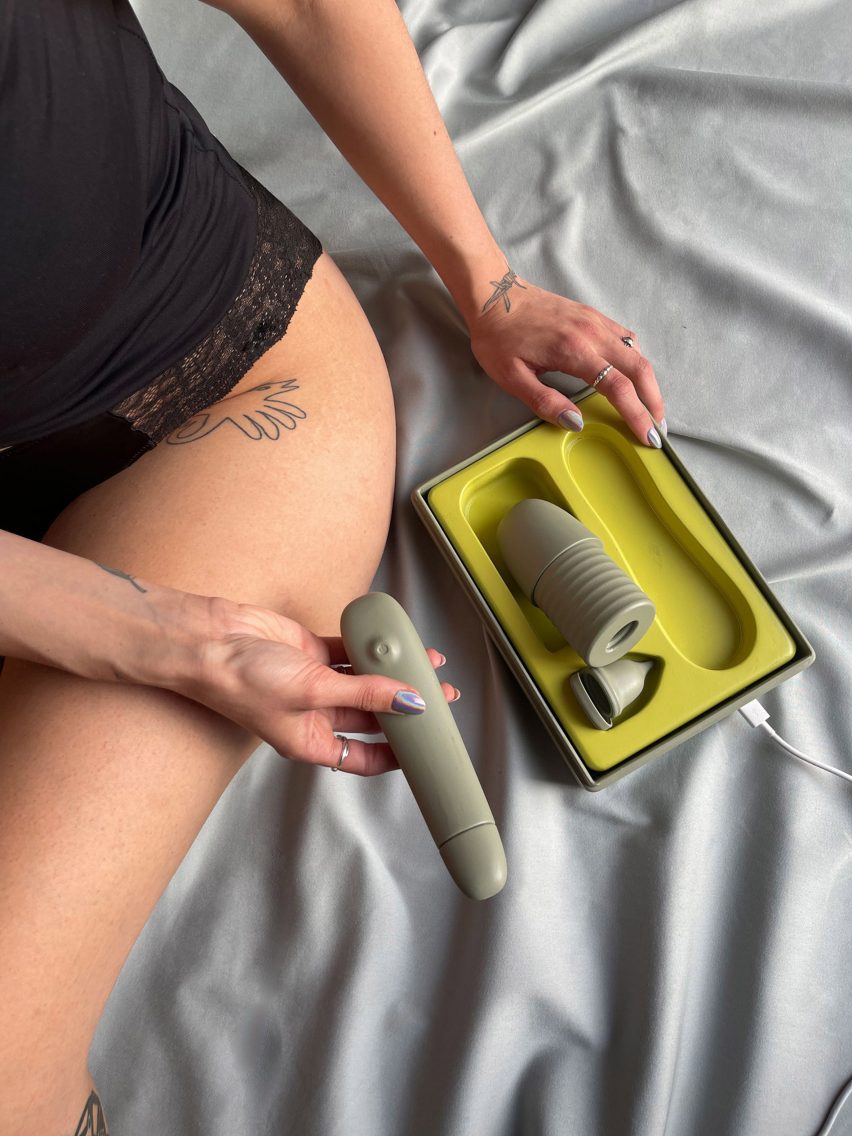
Although the product can be used by anyone hoping to conceive, Kühr designed the set particularly to meet the needs of queer people and singles hoping to start their own family without a partner.
She says these groups often have to shoulder the steep costs of fertility treatments themselves, as health insurance coverage in many countries can depend on relationship status and sexual orientation.
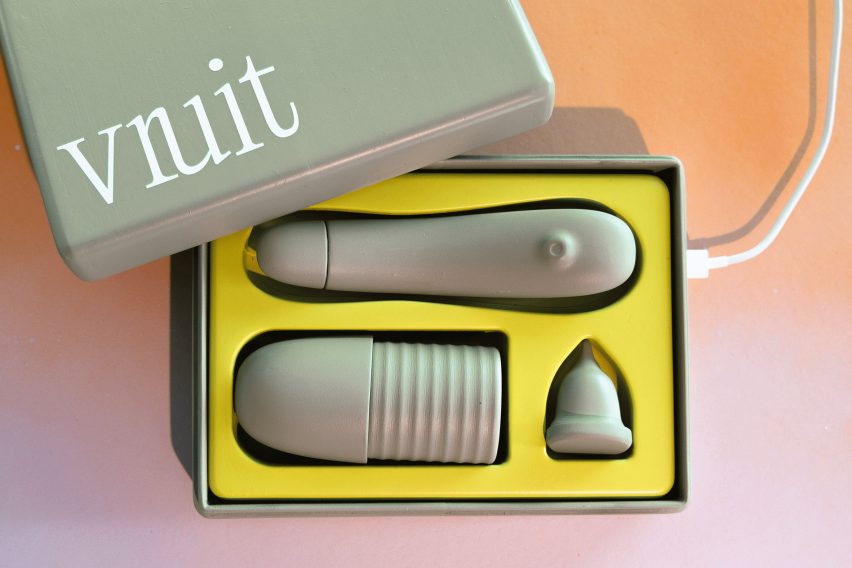
As a result, many end up reaching for DIY at-home solutions, according to conversations that Kühr had with a queer feminist midwife collective and other members of the community.
"The problem is that there are barely any products designed for self-insemination and the few that exist are very technical and clinical," she told Dezeen.
"Often people have to misappropriate products like a menstrual cup or syringe. And because the ejaculate is so sensitive, things have to happen very very quickly and it's very difficult to have a sensual, relaxed experience."
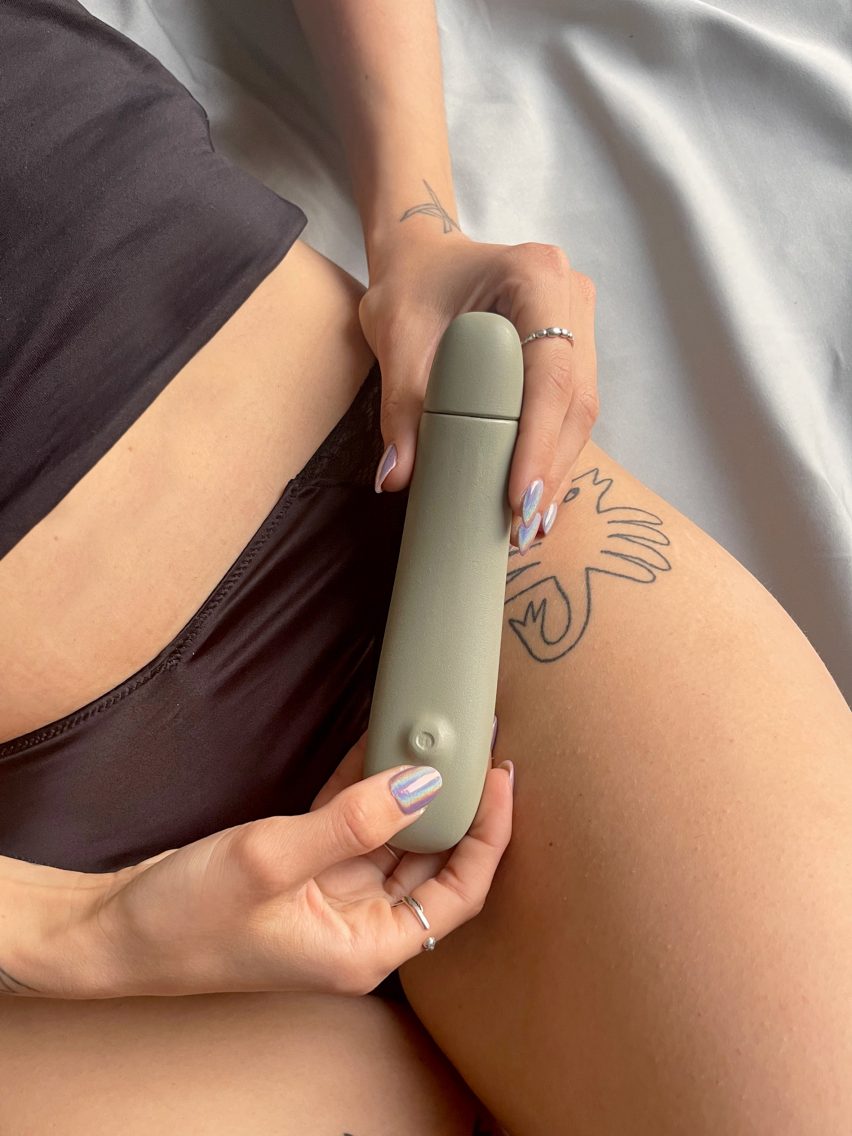
Vruit was designed to accompany users throughout the entire process, from sperm donation to insemination, in a bid to make self-insemination outside of the traditional IVF system "as easy as conception through heteronormative sex".
Currently, Kühr says there are no dedicated products to help people with semen donation, although this is a crucial step of the process.

"It's important to include the semen donation because sperm banks are legally not allowed to post to private households," she told Dezeen.
"That means you always need a private sperm donation. And the ejaculate is very delicate so it has to be protected from environmental impacts."
Kühr's home insemination kit solves this issue with the help of a masturbator with a dedicated cavity at the front, into which the vibrator cap or the silicone cup can be placed to collect the semen.
Post-ejaculation, the cap is slotted back onto the vibrator and the cup is secured with a lid before being placed into an insulated transport box that is passed on to the aspiring parent.
This helps to keep the sperm at body temperature for two to three hours and protects it from other environmental factors, while also functioning as an induction charging station for the accompanying sex toy.
Those using the vibrator can press a button at the bottom of the device during orgasm to release the sperm into the cervix. Afterwards, the silicone cup can be inserted and worn for up to 24 hours to prevent the ejaculate from leaking out.
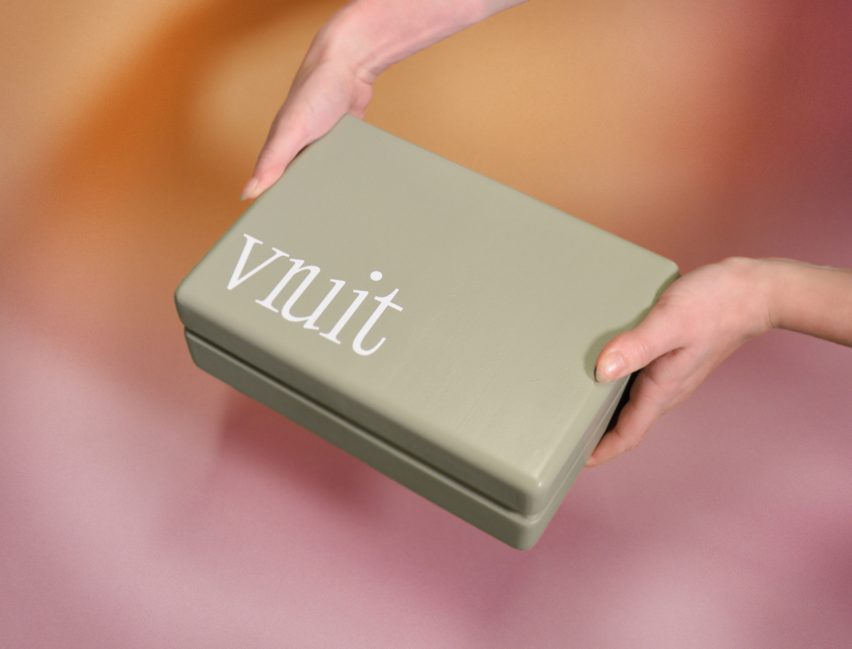
The non-penetrative route simply involves inserting the cup with the sperm, with the option of using the vibrator to provide external stimulation.
"Because it is lightly flattened, it also assists clitoral stimulation," Kühr said. "And an orgasm is important because it causes the uterus to contract and the ejaculate is transported upwards."
The Vruit kit also comes with a dedicated booklet, which guides users through what Kühr calls the insemination "choreography" and provides them with crucial information on associated legal and physiological questions.
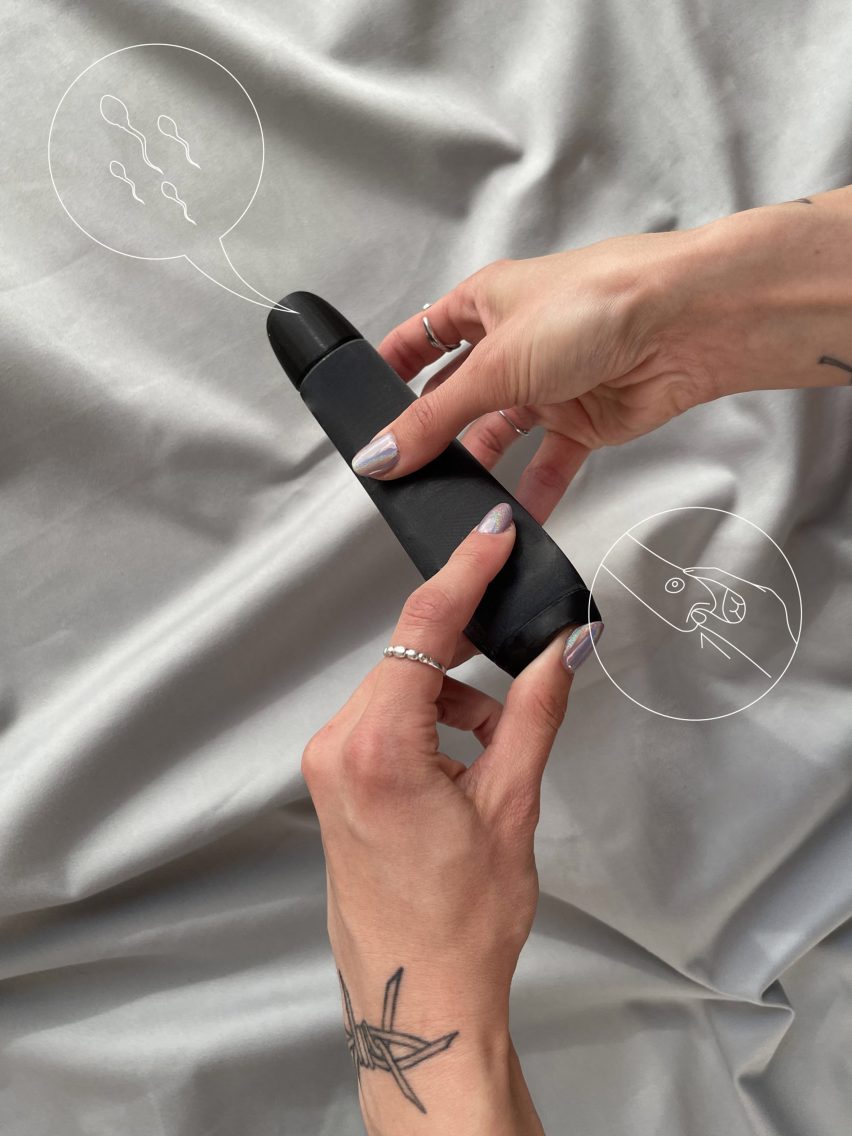
"[Such as] when are my fertile days, how does my cycle work, how do I get high-quality ejaculate," she explained. "But also legal topics, like how do you adopt a stepchild when the sperm donor doesn't take on the role of a legal parent."
"It's about ensuring more self-determination and making the topic more visible because it's not that easy to get all this information collected in one place."
Save for the silicone elements, Kühr's working prototype was entirely 3D-printed from PLA bioplastic in a gender-neutral shade of green, designed to stand out from conventional sex toys.
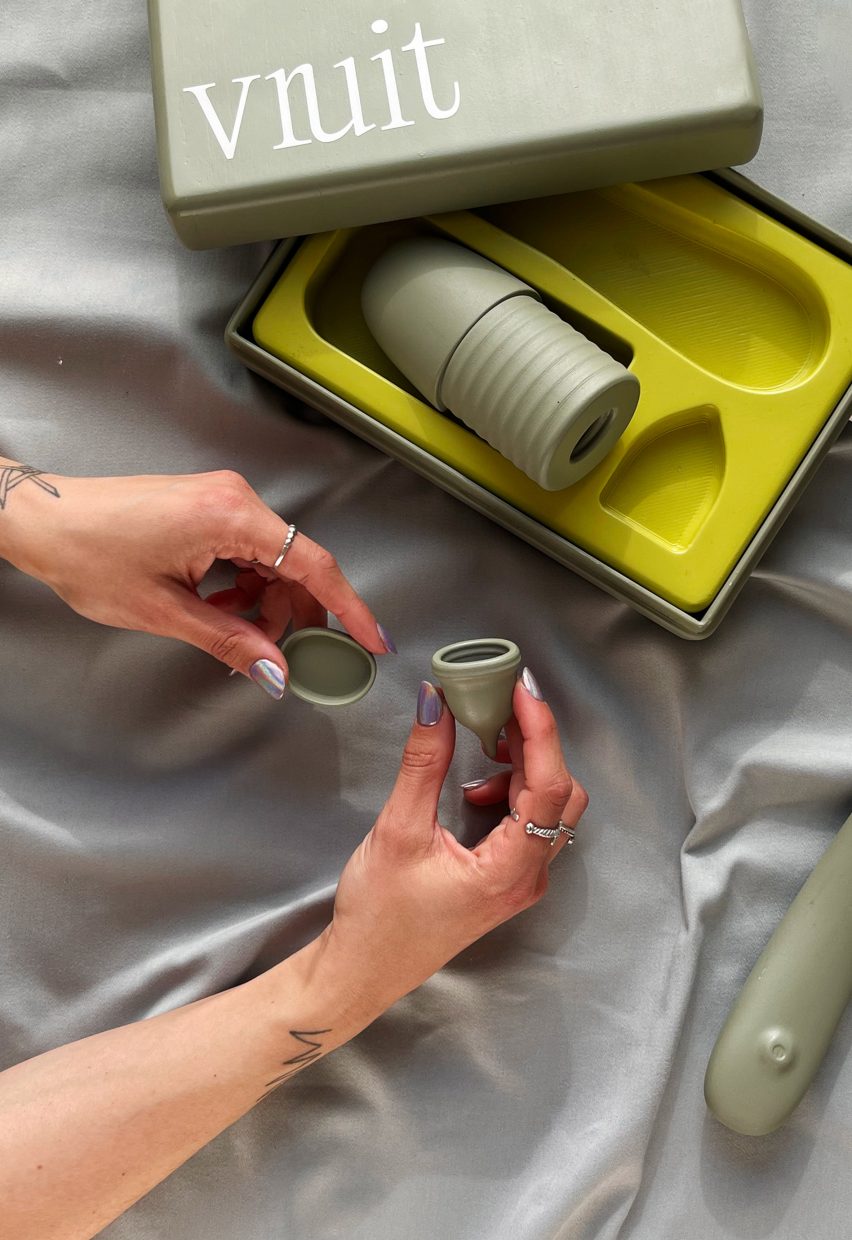
Supported by six months worth of research funding from her university, Germany's Saar Academy of Fine Arts, the designer is now working to evolve the product and asses its commercial viability.
A similar method of intracervical insemination (ICI) is set to be trialled in the UK by the country's National Health Service (NHS) over the coming months as part of what is said to be the world's largest at-home fertility treatment study.
Developed by UK startup Bea Fertility, the system involves placing a small cap of semen at the cervix using an applicator.
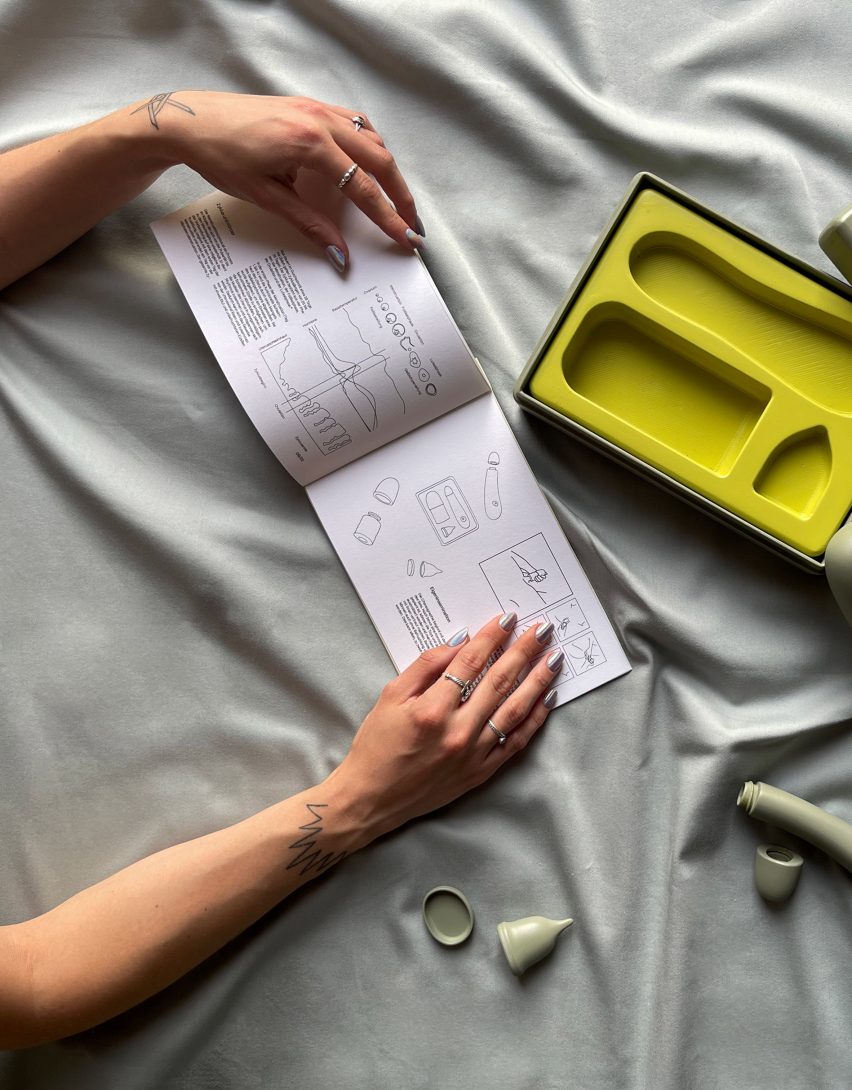
At Dutch Design Week, Vruit was on show as part of the German Design Graduates exhibition, introducing work from 25 young designers from across the country selected by curators Jana Scholze and Amelie Klein.
Elsewhere at this year's festival, the Design Academy Eindhoven graduate show took over abandoned retail units inside the city's Heuvel shopping centre with projects including furniture made from second-hand books and a running shoe designed for use on Mars.
This interview was conducted in German and has been translated into English by the author.
Vruit was on display as part of Dutch Design Week 2023 from 21 to 29 October. See Dezeen Events Guide for information about the many other exhibitions, installations and talks taking place throughout the week.